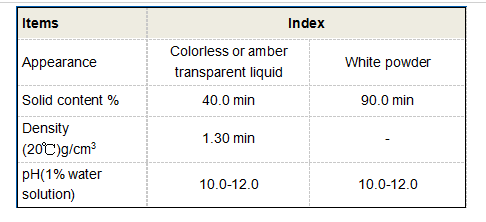coagulants and flocculants in water treatment
Coagulants and Flocculants in Water Treatment
Water treatment is a critical process essential for ensuring the safety and quality of drinking water, as well as for treating wastewater before it is released back into the environment. Among the various techniques employed in water treatment, the use of coagulants and flocculants plays a fundamental role in removing particulates and contaminants from water. This article will delve into the definitions, mechanisms, types, and applications of these substances in water treatment processes.
Definitions and Mechanisms
Coagulation and flocculation are essential steps in water treatment. Coagulation refers to the process of destabilizing suspended particles in water, allowing them to clump together (or coagulate), forming larger aggregates known as flocs. This is typically achieved through the addition of chemical coagulants, which neutralize the charges on the suspended particles and enable them to bond. Flocculation follows coagulation, involving gentle mixing of the water to promote further aggregation of these flocs, which then can be separated from the treated water.
Types of Coagulants
Coagulants can be classified into several categories based on their chemical composition
1. Inorganic Coagulants The most commonly used inorganic coagulants include aluminum sulfate (alum), ferric sulfate, and polyaluminum chloride (PAC). Alum is particularly favored because of its effectiveness in a wide pH range and its ability to form large flocs.
2. Organic Coagulants These coagulants are derived from natural or synthetic organic polymers. Examples include polyacrylamide and chitosan. Organic coagulants are often used in specific applications where lower chemical doses are required or when treating waters with high levels of organic matter.
3. Natural Coagulants Some natural substances, such as moringa extracts and plant-based proteins, have shown promise as coagulants. They are often employed in rural or remote areas where access to conventional chemical coagulants might be limited.
Types of Flocculants
Flocculants, on the other hand, are typically high-molecular-weight polymers that enhance the process of floc formation. They can be classified into
coagulants and flocculants in water treatment

2. Cationic Flocculants These have a positive charge and are effective in treating negatively charged particles, often found in wastewater.
3. Non-ionic Flocculants These do not carry a charge and are versatile, used in various situations depending on specific requirements.
Applications in Water Treatment
Coagulants and flocculants are primarily used in drinking water treatment, industrial wastewater treatment, stormwater management, and the treatment of sludge.
1. Drinking Water Treatment In municipal water treatment plants, coagulants are added to facilitate the removal of suspended solids, turbidity, and even microorganisms. The efficiency of water treatment plants is heavily reliant on the selection of appropriate coagulants and flocculants, ensuring the final product meets safe drinking water standards.
2. Industrial Wastewater Treatment Different industries generate wastewater with varying compositions. Here, coagulants and flocculants are tailored to target specific contaminants, improving the overall effectiveness of the treatment process.
3. Environmental Protection Flocculation is also critical in controlling turbidity in bodies of water affected by runoff and sedimentation. This helps protect aquatic ecosystems by maintaining water quality.
Conclusion
In conclusion, the roles of coagulants and flocculants in water treatment are vital for achieving high-quality output and ensuring public health. The choice of the right coagulant or flocculant depends on the specific characteristics of the water being treated and the contaminants present. Ongoing research in this field may lead to the development of more efficient, eco-friendly agents that can enhance water treatment processes further while minimizing environmental impact. As the demand for clean water continues to grow, the importance of understanding and optimizing the use of these substances in water treatment will remain a priority for researchers and practitioners in the field.
-
LK-319 Special Scale And Corrosion Inhibitor For Steel Plants: Advanced Solutions for Industrial Water SystemsNewsAug.22,2025
-
Flocculant Water Treatment: Essential Chemical Solutions for Purification ProcessesNewsAug.22,2025
-
Isothiazolinones: Versatile Microbial Control Agents for Industrial and Consumer ApplicationsNewsAug.22,2025
-
Scale Inhibitor: Key Solutions for Water System Scale PreventionNewsAug.22,2025
-
Organophosphonates: Versatile Scale Inhibitors for Industrial Water SystemsNewsAug.22,2025
-
Scale and Corrosion Inhibitor: Essential Chemical Solutions for Water System MaintenanceNewsAug.22,2025





